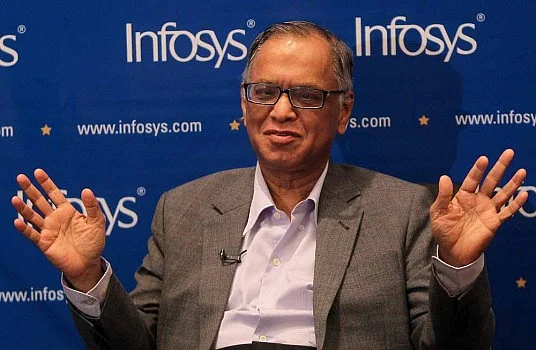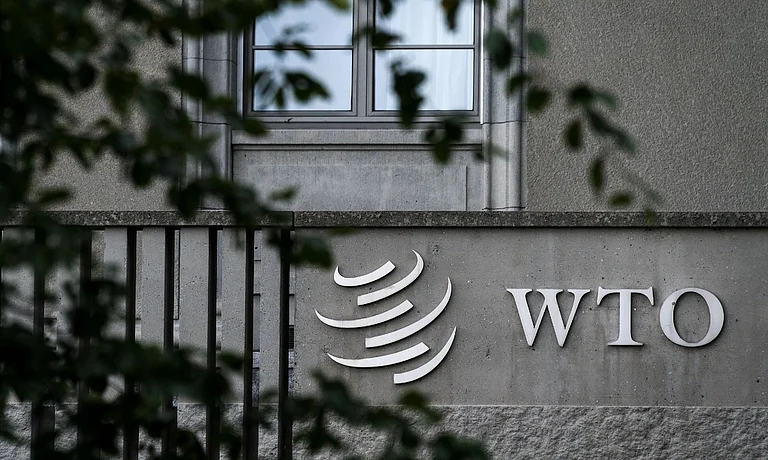Infosys co-founder Narayana Murthy recently mentioned that rising population is a growing concern in India. Murthy was speaking at the convocation ceremony of Motilal Nehru National Institute of Technology in Uttar Pradesh’s Prayagraj on August 18.
The husband of Rajya Sabha MP Sudha Murty, said that the country’s sustainability was threatened due to inadequate attention given to the country’s growing population since the emergency period.
“India faces significant challenges related to population, per capita land availability and healthcare facilities,” he reportedly mentioned.
However, Murthy's claim that the country is not paying attention to its growing population is incorrect. In fact, India's total fertility rate (TFR) has been steadily decreasing.
A Lancet study published in 2024 says that India’s TFR decreased from 6.18 in 1950 to 1.91 in 2021. This is less than the 2.1 TFR children per woman, also known as the replacement level, that is required for a population to remain stable.
Before delving further on where India stands with regards to the population, let's see what Murthy said.
Murthy Highlights Neglect in Population Management
Murthy said that compared to India, which did not pay attention to population control since the emergency, countries such as the US, Brazil and China have high per capita land availability.
Speaking about the importance of sacrifices made by other generations, as per PTI, Murthy said, “One generation must make many sacrifices to improve the lives of the next. My parents, siblings and teachers made significant sacrifices for my progress, and my presence here as the chief guest is proof that their sacrifices were not in vain.”
Where Does India Stand in Terms of Population Control?
As per the Lancet journal, India’s TFR has fallen steadily from 6.18 in 1950 to 4.60 in 1980. The fertility rate further decreased to 1.91 in 2021. The journal cites the usage of modern contraceptives, increasing awareness and education of women as the reasons behind the decrease in fertility, especially in highly fertile countries.
If we look at the data state-wise, out of 36 states and Union Territories, 31 states have achieved the replacement fertility rate of 2.1, as per the Ministry of Health and Family Welfare.
However, states like Bihar, Uttar Pradesh, Jharkhand, Meghalaya and Manipur have fertility rates above the replacement level. The total fertility rates of all these states as per the National Family Health Survey (NFHS-5) are 2.17 or higher. Factors such as preference for son over daughters and fear of sterilisation are some of the reasons for the high fertility rates in these states.
Meanwhile, south Indian states, including Andhra Pradesh, Kerala, Karnataka and Tamil Nadu, were the first to attain the replacement level of fertility in 2011. Better family planning programmes and increased focus on female literacy initiatives are the reasons behind the same.
India's Population Expected to Peak at 1.7 Billion in the 2060s, Says UN
India is one of the most populous countries in the world. The country in April 2023 overtook China as the world’s most populous country, as per the UN.
India's population will reach about 1.7 billion in the early 2060s before declining by 12 per cent, but India will still be the most populous country for the rest of the century. This is according to a report titled 'World Population Prospects 2024', released by the United Nations that was released in July 2024.
Globally, the population is expected to grow to around 10.3 billion by the mid-2080s and then slowly decrease, possibly ending the century at about 10.2 billion, adds the report.
“India is currently the largest country in the world in terms of population, and it is projected to stay so throughout the century. The population is currently estimated at 1.45 billion, and it's supposed to increase further to 1.69 billion,” said Clare Menozzi, senior population affairs officer, population division, UN Department of Economic and Social Affairs to PTI.
While it is true that the country holds the crown of being the most populous country in the world, the country put efforts into reducing its growing population. In fact, India’s fertility rate is below global average fertility rate. In 2021, India had a TFR of 1.91 children per woman, compared to the global TFR of 2.2, as per the Lancet journal.
70-Hour Work Culture
This is not the first time that Murthy’s comment attracted public attention. In October last year, Murthy mentioned that the Indian youth should work 70 hours a week. This would help India compete with other world economies, which have achieved tremendous improvement, as per Murthy.
“Unless we improve our work productivity, we will not be able to compete with those countries that have made tremendous progress,” he said. Murthy got the backing of Ola CEO Bhavish Aggarwal. Aggarwal said, “Totally agree with Narayana Murthy's views. It's not our moment to work less and entertain ourselves. Rather, it's our moment to go all in and build in 1 generation what other countries have built over many generations!”
His comment started discussions and debate about the work timing in India. The discussion around the 70-hour work week even reached the Parliament. The Infosys co-founder's comments again ignored the current reality of India, where the working hours are the longest. According to data from the International Labour Organization for 2023, Indians work 47.7 hours a week, which is the seventh-longest in the world. The nation's labour regulations provide 48-hour work weeks.
After Murthy’s comment about India’s population, debates and discussions have started about the same on social media. What becomes important here is to see the numbers that clearly depict a fall of TFR in the country.































